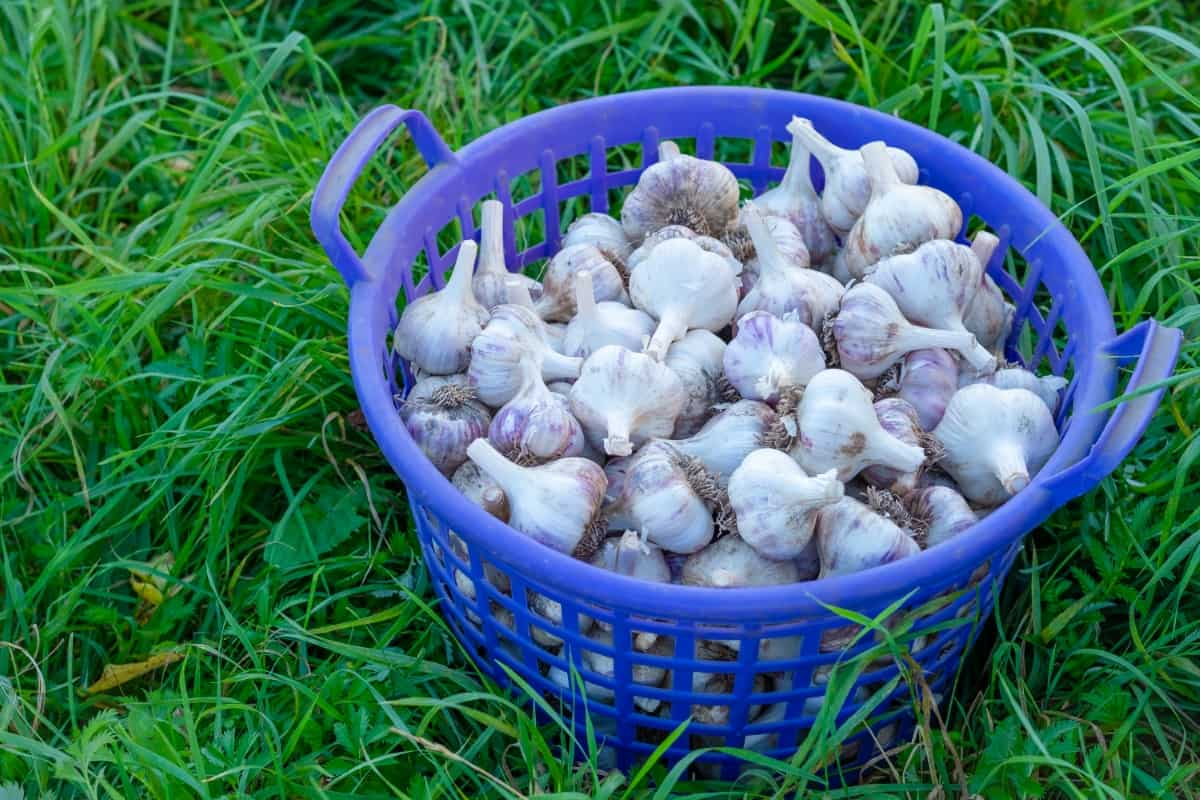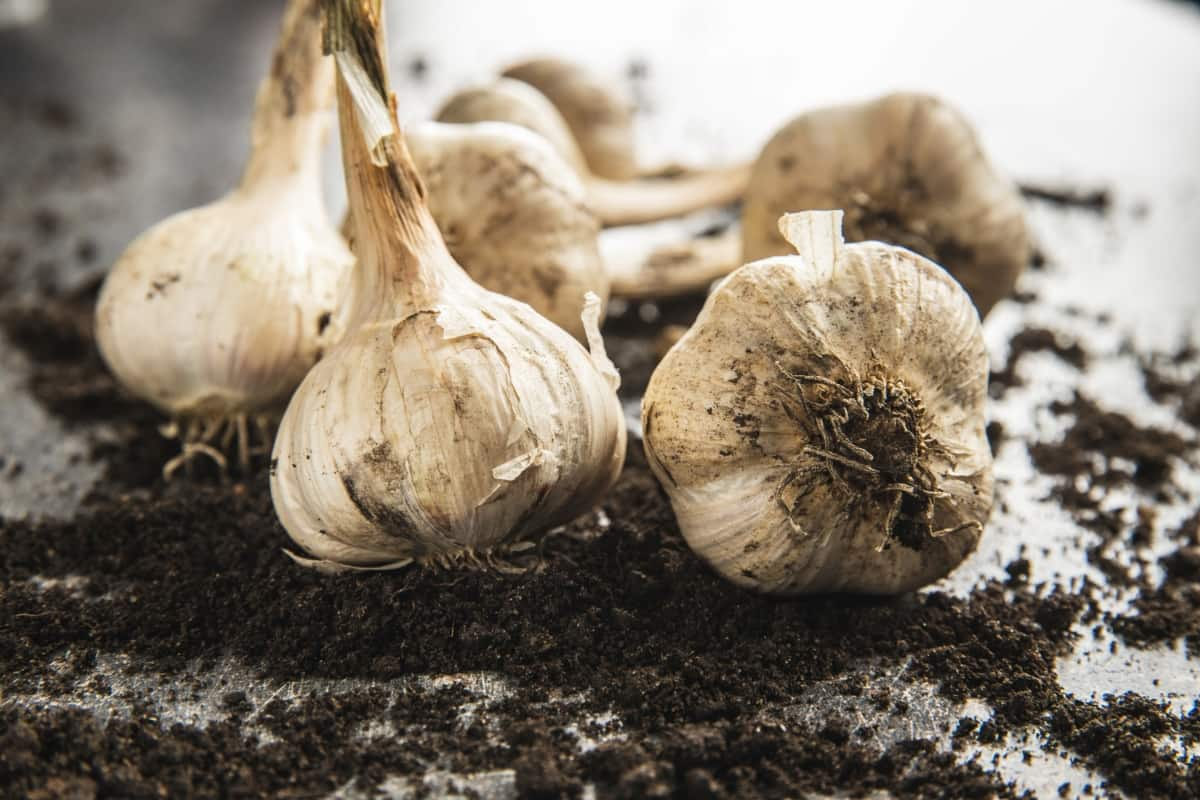Garlic rot, a common challenge for gardeners, can significantly impact the quality and yield of garlic crops. This article delves into various natural and eco-friendly strategies to prevent and manage garlic rot, ensuring a healthy and robust harvest.

How to Prevent Garlic Rot Naturally
Garlic Rot Causes and Symptoms
Garlic rot, a common problem for gardeners, occurs when the garlic bulb is infected, often leading to significant crop loss. The most prevalent form is white rot, which manifests as white, fluffy fungal growth on the cloves and a distinct yellowing of leaves. Understanding what causes white rot in garlic is essential for effective management. It’s often attributed to soil-borne fungi, which can survive in the soil for many years, making control challenging.
Garlic white rot treatment starts with recognizing these symptoms early. White rot garlic symptoms include decaying roots, a moldy smell, and discolored cloves. Many gardeners wonder, can you eat garlic with white rot? While it’s not harmful to humans, the quality and taste of the garlic may be compromised.
Natural and Organic Methods for Preventing Garlic Rot
Preventing garlic rot naturally involves several steps. First, good cultural practices are crucial, such as crop rotation, which helps reduce soil pathogens’ persistence. Organic matter can improve soil health, ensuring better growth and resistance to diseases like garlic rust. Another natural method is to use resistant garlic varieties that are less prone to rot.
Proper planting techniques, such as avoiding overcrowded planting and ensuring well-drained soil, also play a significant role. Additionally, natural remedies like neem oil or homemade garlic sprays can be effective in the early stages of infection. These methods, while natural, require consistent application and monitoring to be effective.
Effective Ways to Control Garlic Rot Naturally
Effective control of garlic rot naturally focuses on both preventive and reactive measures. One key aspect is to maintain clean cultivation practices. This includes removing infected plants promptly to prevent the spread of disease. Enhancing soil health through compost and organic fertilizers also helps create a more disease-resistant environment.
In case you missed it: How to Prevent Bottle Gourd Fruit Rot Naturally: How to Control with Natural and Organic Treatment

Mulching with organic materials like straw can also prevent the spread of spores. For those wondering how to prevent garlic rust, it’s crucial to maintain good air circulation and avoid excessive moisture, as rust thrives in damp conditions. It’s also recommended to avoid overwatering and to water the plants at the base to keep the foliage dry.
Preventing Garlic Bulb Rot: Natural and Organic Solutions
Preventing garlic bulb rot with natural and organic solutions is an effective and eco-friendly approach. One of the primary methods is to ensure proper planting and harvesting times, as garlic is less susceptible to rot when grown in favorable conditions. Soil amendment with organic matter not only improves soil health but also helps in suppressing pathogens.
Using things like straw or wood chips as organic mulch can keep the soil safe and lower the chance of spreading spores. For those seeking information on how to prevent garlic rot naturally, especially on platforms like Reddit, it’s important to note that many gardeners recommend crop rotation and disease-free planting material as fundamental practices.
How to Protect Garlic from Rot Using Natural Treatments
To protect garlic from rot using natural treatments, starting with healthy, disease-free cloves is crucial. Regularly monitoring the garlic plants for any signs of rot or rust is important, as early detection can make natural treatments more effective. Organic fungicides, such as those containing sulfur, can be used as a preventive measure.
Additionally, practicing good sanitation in the garden, like cleaning tools and removing plant debris, can reduce the spread of pathogens. For gardeners concerned about whether garlic rust stays in the soil, improving soil health through organic amendments can help reduce the persistence of rust spores in the soil.
Organic Approaches to Preventing Garlic Rot in the Garden
Organic approaches to preventing garlic rot in the garden emphasize prevention over cure. Building healthy soil with organic compost and manure creates a robust environment where garlic can thrive. Using disease-resistant varieties is also a key strategy. Crop rotation is essential, as it helps break the life cycle of soil-borne diseases. Integrating beneficial insects and companion planting can naturally reduce the incidence of pests and diseases.
For those looking into white rot of garlic chemical control, it’s important to focus on organic alternatives that are less harmful to the environment and beneficial to organisms. Regular inspections of the garlic plants for early signs of disease can lead to timely interventions, making organic approaches more effective.
Natural Remedies for Controlling Garlic Rot in Storage
Controlling garlic rot in storage is crucial for preserving the harvest. Natural remedies play a significant role in this process. The key is to start with properly cured garlic, as moisture is a major contributor to rot. Keep garlic in a cool, dry spot with good airflow to stop it from getting moldy. Using natural desiccants like silica gel can help maintain a dry environment.
In case you missed it: How to Prevent Mango Fruit Rot Naturally: How to Control with Natural and Organic Treatment

Regular checks are important to remove cloves that show rotting signs, preventing them from spreading to healthy bulbs. Some gardeners use natural essential oils, like neem oil, as a preventive measure by lightly coating the garlic before storage. These natural remedies, while simple, are effective in extending the shelf life of garlic by preventing rot.
Preventing Garlic Bulb Rot Naturally: Tips and Techniques
Preventing garlic bulb rot naturally involves a combination of good gardening practices and proactive measures. Select disease-resistant garlic varieties, as they are less prone to rot. Ensuring proper soil drainage is critical; garlic does not thrive in soggy conditions. Add organic material to the soil for better quality and nutrients.
Plant garlic correctly to help it grow well and prevent rot. Natural fungicides like sulfur-based sprays can help protect against fungal diseases. Additionally, rotating your garlic crop with non-allium species can break the cycle of soil-borne diseases, reducing the chances of bulb rot.
Eco-Friendly Strategies for Preventing Garlic Rot in the Field
Implementing eco-friendly strategies for preventing garlic rot in the field protects the garlic crop and supports sustainable agriculture practices. Crop rotation is a fundamental strategy, as it helps reduce soil-borne pathogens’ build-up. Utilizing green manures and organic composts enhances soil health and suppresses disease-causing organisms.
Encouraging biodiversity in the garden, such as planting beneficial insect-attracting flowers, can naturally control pest populations that may spread diseases. Mulching with organic materials helps maintain soil moisture balance and temperature, which is crucial for healthy garlic growth. Regular weeding reduces competition for nutrients and helps prevent moisture build-up around the garlic plants.
Holistic Approaches to Managing Garlic Rot Naturally
Holistic approaches to managing garlic rot naturally involve integrating various organic and sustainable practices. Focus on building overall garden health by incorporating diverse plants, which leads to a more balanced ecosystem. Use companion planting to deter pests and diseases naturally.
In case you missed it: How to Prevent Citrus Fruit Rot Naturally: Best Ways to Control with Natural and Organic Treatment

For instance, planting marigolds or chives near garlic can repel harmful insects and improve soil conditions. Natural soil amendments like compost tea or seaweed extract can enhance soil fertility and boost the garlic’s natural defenses. Implementing regular crop rotation and avoiding planting garlic in the same spot year after year is crucial. Engaging in these holistic practices creates a garden environment that is less conducive to garlic rot and more supportive of healthy, robust garlic plants.
Conclusion
Implementing the natural and holistic methods discussed here can effectively prevent and control garlic rot, both in the field and during storage. Embracing these eco-friendly strategies secures your garlic crop’s health and contributes to sustainable and environmentally conscious gardening practices.
- Feed Your Flock for Less: Top 10 Tips to Save on Chicken Feed
- Ultimate Guide to Ossabaw Island Hog: Breeding, Raising, Diet, and Care
- Hatching Answers: The Top 10 Reasons Your Chickens Aren’t Laying Eggs
- Eggs and Economics: Breaking Down the Cost of Raising Backyard Chickens
- Defend Your Greens: Proven Methods to Keep Iguanas Out of Your Garden
- Ultimate Guide to Cinnamon Queen Chicken: A Comprehensive Guide for Beginners
- Ultimate Guide to California Tan Chicken: Breeding, Raising, Diet, Egg-Production and Care
- Ultimate Guide to Marsh Daisy Chicken: Breeding, Raising, Diet, and Care
- 10 Types of Chicken Farming Businesses You Can Start for Profits